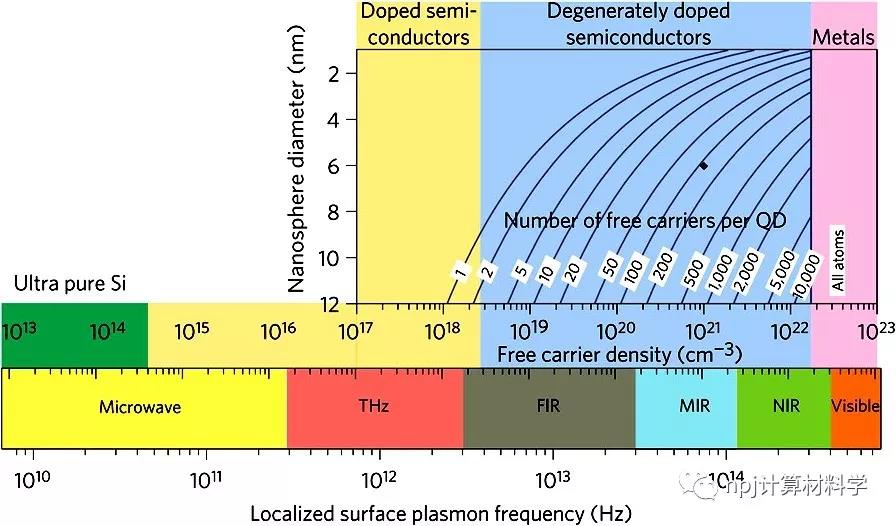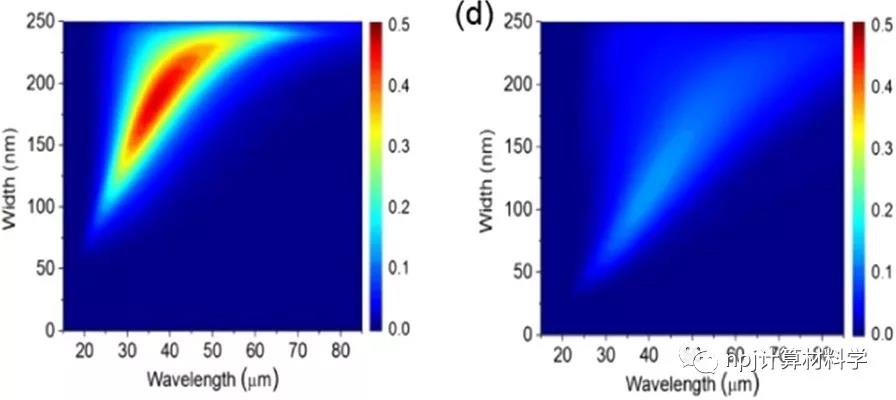|
 |
本文从设计表面等离激元材料和结构角度,对表面等离激元增强光和物质相互作用的最新进展进行了简要、系统的综述。来自中国科学院上海硅酸盐研究所高性能与超微结构国家重点实验室和华南理工大学物理与光电学院的杨勇研究员和李志远教授分别领衔的两个研究组,具体讨论了具有各种形貌和结构的金属、半导体和二维材料中的表面等离激元特性,波长范围覆盖了紫外、可见、近红外、远红外的波段。然后,他们讨论了表面等离激元增强的光和物质相互作用的原理以及表面等离激元热点的重要作用。几种典型的表面等离激元增强的光和物质相互作用,包括荧光、拉曼散射、非线性光学效应、光热效应、光声效应、催化、光伏转换等,都在此文中做了简要的回顾。通过此文简明的讨论,他们希望向读者提供对表面等离激元和相关应用的全面而深入的理解,并为未来构建高性能表面等离激元材料和器件提供有益的指导。该文近期发表于npj Computational Materials 5: 45(2019)。
Summary
Plasmon-enhanced light–matter interactions: by design
Recent progress on plasmon-enhanced light–matter interactions by design of plasmonic materials and structures is briefly yet systematically reviewed. Two groups led by Yong Yang & Zhi-Yuan Li from the Shanghai Instituteof Ceramics, CAS, and South China University of Technology, respectively,discussed SPs in metal, semiconductor and 2D materials with various morphologies and structures, with plasmonic wavelengths ranging from ultraviolet, visible, NIR to far infrared. They then introduced the principle of plasmon-enhanced light–matter interactions and the role of plasmonic hot spots. Representative applications of SPs, including plasmon-enhanced fluorescence, Raman spectroscopy, heat generation, photoacoustic, photocatalysis, nonlinear optics and solar cell, are briefly discussed. Through these concise discussions, they hope to deliver to the readers a complete and deep understanding of SPs and associated applications, and provide useful guidelines for constructing future high-performance plasmonic materials and devices. This review was recently published in npj Computational Materials 5: 45(2019).
 |
原文Abstract及其翻译
Plasmon-enhanced light–matter interactions and applications (表面等离激元增强的光-物质相互作用及应用)
Hua kang Yu, Yusi Peng, Yong Yang & Zhi-Yuan Li
Abstract Surface plasmons are coherent and collective electron oscillations confined at the dielectric–metal interface. Benefitting from the inherent subwavelength nature of spatial profile, surface plasmons can greatly accumulate the optical field and energy on the nanoscale and dramatically enhance various light–matter interactions. The properties of surface plasmons are strongly related to materials and structures, so that metals, semiconductors and two-dimensional materials with various morphologies and structures can have alternating plasmonic wavelengths ranging from ultraviolet, visible, near infrared to far infrared. Because the electric field can be enhanced by orders of magnitude within plasmonic structures, various light–matter interaction processes including fluorescence, Raman scattering, heat generation, photoacoustic effects, photocatalysis, nonlinear optical conversion, and solar energy conversion, can be significantly enhanced and these have been confirmed by both theoretical, computational and experimental studies. In this review, we present a concise introduction and discussion of various plasmon-enhanced light–matter interaction processes. We discuss the physical and chemical principles, influencing factors, computational and theoretical methods, and practical applications of these plasmon-enhanced processes and phenomena, with a hope to deliver guidelines for constructing future high-performance plasmonic devices and technologies.
摘要 表面等离激元是受限于介质-金属界面处的电子集体相干振荡。受益于其亚波长的空间分布特性,表面等离激元可将光场强度和能量局域在纳米尺度的空间范围内,从而显著地增强各种光和物质的相互作用。表面等离激元的性质与材料、结构等密切相关。具有各种形态和微纳结构的金属、半导体和二维材料等表面等离激元器件覆盖了紫外、可见、近红外和远红外波段。得益于表面等离激元结构中几个数量级的电场增强,包括荧光、拉曼散射、非线性光学效应、光热效应、光声效应、催化、光伏转换等各种光和物质相互作用过程可获得显著的增强,这些已得到了理论、计算和实验研究的证实。本文简要回顾和讨论了各种表面等离激元增强的光和物质相互作用过程和现象背后的物理和化学机理,影响因素,数值计算与理论方法,以及实际应用,旨在为后续构建高性能表面等离激元器件和技术提供有益的参考。
原文引自“两江科技评论”微信公众号。
原文地址:https://mp.weixin.qq.com/s/-NzWUmypN-GbAvL-LH0CXQ
上海复享光学股份有限公司(简称:复享光学)诞生于中国的高校实验室,是一家高科技型光谱仪器公司。公司为科学家和工程师提供光谱产品、系统、服务。“让光谱简单"是公司发展理念,“光谱改变生活”是公司的愿景。
公司专注光谱仪器发展超过八年,获得国家高新技术企业资质,于2016年登陆新三板(NEEQ:838781)。公司位于复旦大学科技创业园,目前拥有约40名高学历工程师。公司官网:www.ideaoptics.com
|